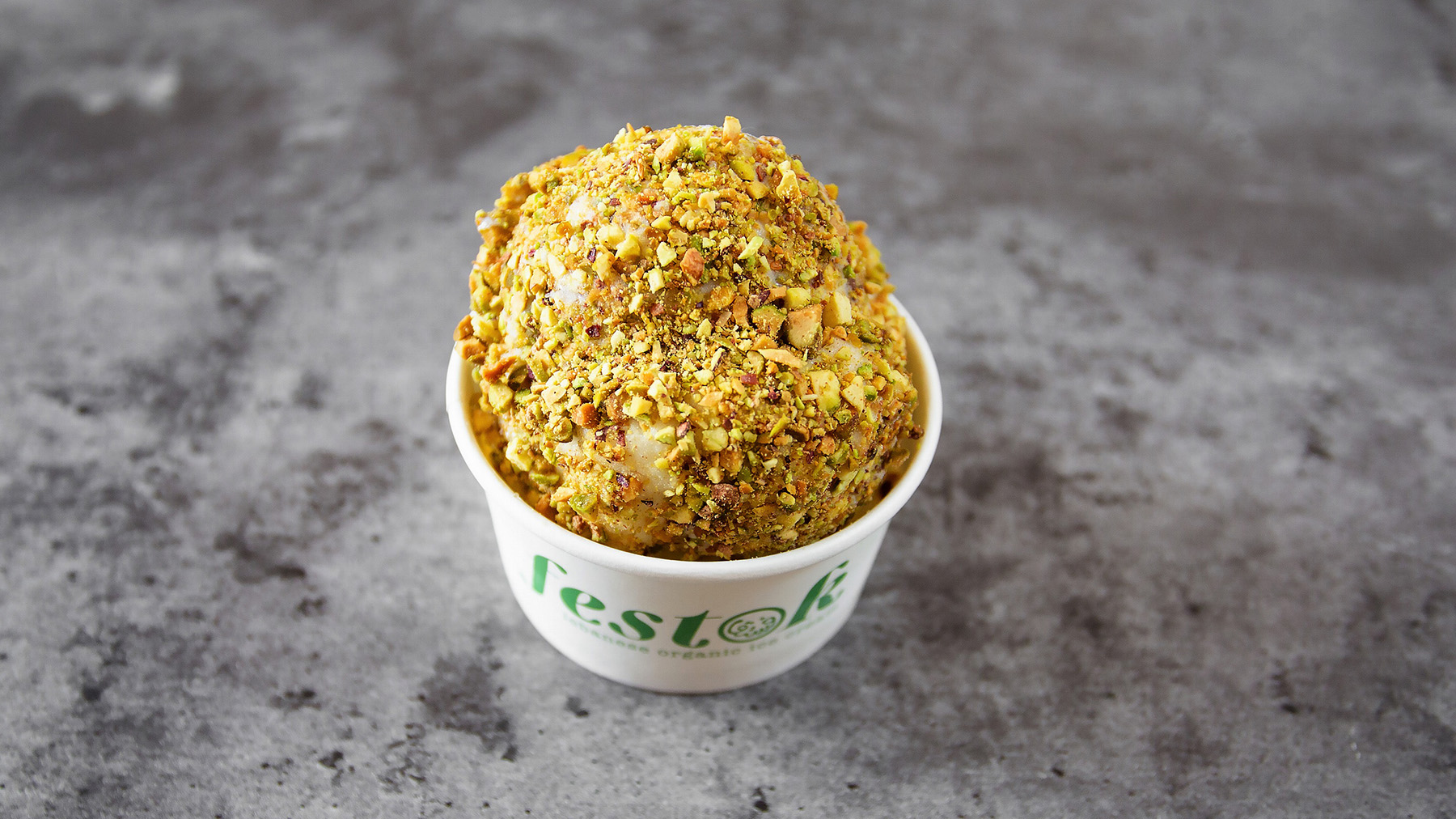Food philosophy
Karen Massad Saade, founder of Festok, on her relationship with food
Interview: Ellie Costigan
1. I don’t have a background in food. I used to work for Google in Dublin, then moved to London and worked in ecommerce. I left my job because I wanted to do this. I’ve always loved ice cream; I have a passion for it—to the extent of factoring in trying new ice cream concepts when planning holiday trips!
2. At Festok, I make everything myself in our Marylebone kitchen. We live in Marylebone and I love the area: it’s very central and I love the high street, it’s really amazing. It’s like you’re walking in a movie.
3. The texture of Lebanese ice cream is different because the base is different. In gelato, for example, they use eggs, milk, double cream, and a lot of sugar; for Lebanese ice cream we use orchid powder, mastic, and orange blossom water, which makes it more elastic. It also melts slower than regular ice cream, because it’s not high in sugar. The higher the sugar content, the faster the ice cream melts.
4. We first did the Marylebone Summer Festival last year. It was excellent. The feedback was very good and the queue was super long: security had to ask us to stop serving, as it was stopping traffic!
5. I’ve always loved cooking, but I never took it seriously. When I decided to start taking ice cream courses, I never expected it to be so complicated. It’s a science. You have few components—air, water, fat, sugar—but if you add one additional gram of sugar, you mess up the whole recipe. It’s also not something that you make and forget about—you have to keep monitoring it to check it’s still good and each time you take it in and out of the freezer, it changes. It’s very precise.
6. When I moved to London, I noticed that authentic Lebanese ice cream was not available. It was frustrating, especially in a city that many people call the food capital of the world. I also find most of the ice cream today very light in flavour and not punchy enough—that for me presented an opportunity.
7. We started in markets. In markets, you feel like people go there to discover new food. They search for these new ideas. People really loved it, because Lebanese food has a really good reputation in the UK, but not Lebanese ice cream, so when they see it everyone is curious to know what’s different.
8. It took me a year to finalise all the recipes. I learnt the basics of ice cream here—how to make regular ice cream, gelato and soft serve—then I went to Lebanon for two months. I tried lots of ice cream there and then I had to guess how to make it: in Lebanon, no one gives you the recipe—it’s secret. No one will tell you; they don’t let you in their kitchen. So, basically, I had to guess. We did several tastings in the beginning, adjusting the recipes—we ate so much ice cream for a year!—and then we got it right.
9. Everything we use is organic and natural: we don’t use artificial colourants or flavourings, and we use unrefined cane sugar. We get some of our ingredients from Lebanon, Turkey, Greece, Italy—our pistachios are from Sicily, they’re a premium variety called bronte and they are very creamy. We get milk, cream, sugar from here.
10. Since the beginning, my vision was to turn homemade authentic Lebanese desserts into ice cream. For example, we have a turmeric cake in Lebanon and it’s my favourite in the world, so I turned it into an ice cream. We have carob—a pea that’s cultivated for its edible pods—which is like a replacement for chocolate. In Lebanon you always find carob molasses on the table with tahini, as a dip. Our best-selling vegan flavour is meghli. It is a dessert we have in Lebanon when a baby is born. It has aniseed, caraway, and cinnamon, garnished with coconut and nuts. I have taken all my favourite things and turned them into ice cream flavours.

